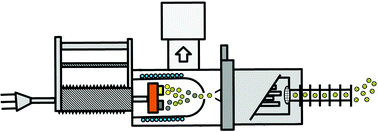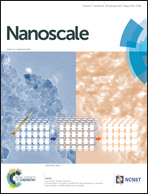Soft landing of bare nanoparticles with controlled size, composition, and morphology†
Abstract
Physical synthesis employing magnetron sputtering and gas aggregation in a modified commercial source has been coupled with size-selection and ion soft landing to prepare bare nanoparticles on surfaces with controlled coverage, size, composition, and morphology. Employing atomic force microscopy (AFM) and scanning electron microscopy (SEM), it is demonstrated that the size and coverage of nanoparticles on flat and stepped surfaces may be controlled using a quadrupole mass filter and the length of deposition, respectively. AFM shows that nanoparticles bind randomly to flat surfaces when soft landed at relatively low coverage (4 × 104 ions μm−2). On stepped surfaces at intermediate coverage (4 × 105 ions μm−2) nanoparticles bind along step edges forming extended linear chains. At the highest coverage (2 × 106 ions μm−2) nanoparticles form a continuous film on flat surfaces. On one surface with sizable defects, the presence of localized imperfections results in agglomeration of nanoparticles onto these features and formation of neighboring zones devoid of particles. Employing high resolution scanning transmission electron microscopy (STEM) and electron energy loss spectroscopy (EELS) the customized magnetron sputtering/gas aggregation source is demonstrated to produce bare single metal particles with controlled morphology as well as bimetallic alloy nanoparticles with defined core–shell structures of that are of interest to catalysis.


 Please wait while we load your content...
Please wait while we load your content...